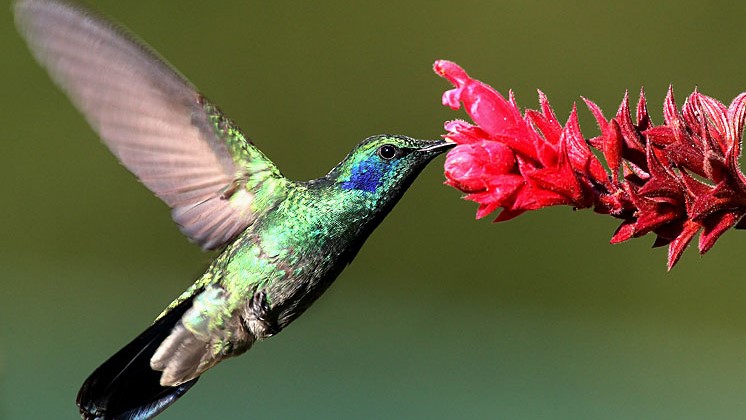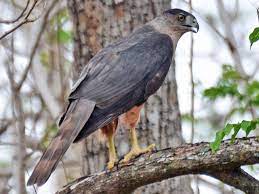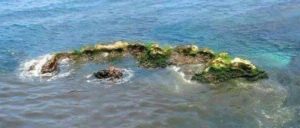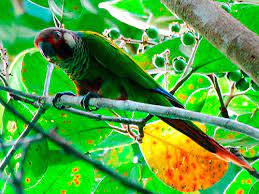EN GRAVE PELIGRO DE EXTINCIÓN UNA AMPLIA VARIEDAD DE ESPECIES DE LA FAUNA CUBANA. PHOTOS
El zunzuncito, el cocodrilo, el gavilán colilargo, entre las especies endémicas de la fauna cubana en peligro de extinción. Las mayores amenazas de desaparición están entre reptiles y anfibios, pero también en mamíferos y peces de agua dulce.
LA CANTIDAD DE ESPECIES de la fauna amenazadas en Cuba, muchas de ellas endémicas y en peligro de extinción, es elevada en la actualidad, como muestran los textos ‘Libro rojo de los vertebrados de Cuba, Rostros en peligro’, ‘Libro rojo de los invertebrados de Cuba’, y más reciente el estudio ‘Estado de la conservación de la fauna amenazada: Libros rojos de Cuba’, que publicó el diario oficial Granma.
El doctor en Ciencias Biológicas, Roberto Alonso Bosch, investigador de la Facultad de Biología de la Universidad de La Habana y presidente de la Sociedad Cubana de Zoología (SOCZOO), dijo al periódico que los mayores porcentajes bajo amenaza con respecto al total de especies conocidas corresponden a los reptiles (54,2 %) y los anfibios (40,3 %), grupos de poca capacidad de dispersión y muchas veces localizados en un tipo de hábitat específico.
ESPECIES EN MAYOR PELIGRO DE EXTINCION
Al comparar el número de especies endémicas amenazadas con la totalidad de las incluidas para esa categoría en Cuba, los mayores problemas están centrados en los anfibios, los mamíferos y los peces de agua dulce, afirmó por su parte el también doctor en Ciencias Biológicas Hiram González Alonso, del Instituto de Ecología y Sistemática (IES), del Ministerio de Ciencia, Tecnología y Medio Ambiente y miembro de honor de la SOCZOO.
Dentro de la lista aparecen el manjuarí o catán cubano (Atractosteus tristoechus), pez endémico de Cuba que podría estar entre las especies de agua dulce más antiguas del Caribe (su población se limita hoy principalmente a la Península de Zapata y a la Isla de la Juventud), y el almiquí (Solenodon cubanus), especie insectívora de hábitos nocturnos, clasificada como una de las de mayor riesgo de extinción en la Isla.
También figura el manatí antillano (Trichechus manatus), que forma parte de la fauna autóctona cubana y cuyos avistamientos han disminuido de forma apreciable en las últimas tres décadas, mientras aumentan los registros de mortalidad.
En la relación de animales expuestos al peligro de desaparecer se incluyen, asimismo, el perico cubano o catey (Psittacara euops), el gavilán colilargo (Accipiter gundlachi), el emblemático zunzuncito (Mellisuga helenae), considerada el ave más pequeña del mundo, el cocodrilo cubano (Crocodylus rhombifer), y la ranita de iberia (Eleutherodactylus iberia), el anfibio más diminuto del hemisferio norte.
La doctora en Ciencias Marta Hidalgo Gato, investigadora del IES, aseveró que ascienden a 130 los invertebrados cubanos que ostentan alguna categoría de amenaza, como son, por ejemplo, los caracoles del género Polymita, cuyas conchas son probablemente las más bellamente coloreadas del orbe, y varias especies de mariposas, escarabajos, abejas y arácnidos.
PRINCIPALES AFECTACIONES
Basado en los estudios realizados durante muchos años por un alto número de científicos, han podido determinarse los factores que más repercuten en la salvaguarda de la fauna cubana.
Son ellos la fragmentación de hábitats, los efectos de la contaminación ambiental, los incendios rurales y forestales, las prácticas agrícolas no sostenibles, la pesca, la caza y la tala furtiva, el comercio ilegal de especies y la introducción y propagación de especies exóticas invasoras.
Sobre esta última causa enumerada, se trata de especies no autóctonas que, introducidas de forma deliberada o parcial en distintas etapas históricas, lograron establecerse en áreas naturales y urbanas, mostrando un crecimiento incontrolado de sus poblaciones. Un ejemplo es el caracol gigante africano.
Estas suelen causar daños significativos, al provocar extinciones totales o la notable disminución del número de ejemplares, tanto en la fauna como en la flora de la Isla.
Los impactos indirectos vinculados a los posibles efectos del cambio climático, en particular el incremento de la temperatura media, la intensificación y prolongación de periodos de sequía, el aumento del nivel medio del mar, y de la frecuencia e intensidad de eventos climatológicos extremos, representan, asimismo, otras amenazas.
Según cifras citadas por el doctor Roberto Alonso Bosch, en la actualidad la fauna terrestre cubana comprende 370 especies registradas de aves entre endémicas, residentes y migratorias más de 160 de reptiles, 153 de ellos autóctonos con un 80% de endemismo; cerca de 70 especies de anfibios, de los cuales solo cuatro no son endémicos, y 34 de mamíferos terrestres.
Atesora, además, la mayor diversidad y endemismo de peces acuícolas del Caribe insular, en tanto se contabilizan 3.170 especies de moluscos, más de 8.400 de insectos, el grupo animal más diverso y abundante de nuestro archipiélago, y una cantidad de especies de arácnidos descritas para Cuba superior a las 1.300.
Grupos menos conocidos, como los anélidos y los nemátodos, aportan más de 800 especies adicionales a la lista de invertebrados.
Recientemente, sobre el estado de la vegetación cubana, la actualización de la denominada Lista Roja de la Flora en Cuba confirmó la extinción de 22 especies, cuatro desaparecidas de forma definitiva regionalmente y 772 en peligro crítico.
IN SERIOUS EXTINCTION DANGER IN A WIDE VARIETY OF CUBAN FAUNA SPECIES. PHOTOS
The zunzuncito, the crocodile, the long-tailed hawk, are among the endemic species of Cuban fauna in danger of extinction. The greatest threats of disappearance are among reptiles and amphibians, but also mammals and freshwater fish.
THE NUMBER OF SPECIES of the threatened fauna in Cuba, many of them endemic and in danger of extinction, is currently high, as shown in the texts Red Book of Cuban Vertebrates, Endangered Faces, Red Book of Cuban Invertebrates, and more recently the study State of the conservation of the threatened fauna: Red books of Cuba, published the official newspaper Granma.
The doctor in Biological Sciences, Roberto Alonso Bosch, a researcher at the Faculty of Biology of the University of Havana and president of the Cuban Society of Zoology (SOCZOO), told the newspaper that the highest percentages under threat with respect to the total of known species they correspond to reptiles (54.2%) and amphibians (40.3%), groups with little dispersal capacity and often located in a specific type of habitat.
SPECIES IN GREATEST ENDANGER OF EXTINCTION
When comparing the number of endemic species threatened with the totality of those included for that category in Cuba, the biggest problems are centered on amphibians, mammals, and freshwater fish, said Hiram González, also a doctor in Biological Sciences. Alonso, from the Institute of Ecology and Systematics (IES), from the Ministry of Science, Technology, and Environment, and an honorary member of the SOCZOO.
The list includes the manjuarí or Cuban catán (Atractosteus tristoechus), an endemic fish to Cuba that could be among the oldest freshwater species in the Caribbean (its population is today mainly limited to the Zapata Peninsula and the Isle of Youth ), and the almiquí (Solenodon cubanus), an insectivorous species with nocturnal habits, classified as one of the highest risks of extinction on the Island.
There is also the Antillean manatee (Trichechus manatus), which is part of the native Cuban fauna and whose sightings have decreased appreciably in the last three decades, while mortality records increase.
The list of animals exposed to the danger of disappearing also includes the Cuban parrot or catey (Psittacara euops), the long-tailed hawk (Accipiter gundlachi), the emblematic zunzuncito (Mellisuga helenae), considered the smallest bird in the world, the Cuban crocodile (Crocodylus rhombifer), and the Iberian frog (Eleutherodactylus iberia), the smallest amphibian in the northern hemisphere.
Science Doctor Marta Hidalgo Gato, a researcher at the IES, asserted that there are 130 Cuban invertebrates that have some category of threat, such as, for example, snails of the Polymita genus, whose shells are probably the most beautifully colored in the world. and various species of butterflies, beetles, bees, and arachnids.
MAIN AFFECTATIONS
Based on studies carried out over many years by a large number of scientists, the factors that most affect the safeguarding of Cuban fauna have been determined.
They are the fragmentation of habitats, the effects of environmental pollution, rural and forest fires, unsustainable agricultural practices, fishing, hunting and poaching, the illegal trade of species, and the introduction and spread of invasive alien species. .
Regarding this last enumerated cause, it is about non-autochthonous species that, deliberately or partially introduced in different historical stages, managed to establish themselves in natural and urban areas, showing an uncontrolled growth of their populations. An example is the giant African snail.
These usually cause significant damage, by causing total extinctions or a notable decrease in the number of specimens, both in the fauna and flora of the Island.
Indirect impacts linked to the possible effects of climate change, in particular the increase in average temperature, the intensification and prolongation of periods of drought, the increase in mean sea level, and the frequency and intensity of extreme weather events, represent also other threats.
According to figures cited by Dr. Roberto Alonso Bosch, at present the Cuban terrestrial fauna comprises 370 registered species of birds among endemic, resident, and migratory more than 160 reptiles, 153 of them autochthonous with 80% endemism; about 70 species of amphibians, of which only four are not endemic, and 34 of terrestrial mammals.
It also treasures the greatest diversity and endemism of aquaculture fish in the insular Caribbean, while there are 3,170 species of mollusks, more than 8,400 insects, the most diverse and abundant animal group in our archipelago, and a number of species of arachnids described for Cuba over 1,300.
Lesser-known groups, such as the annelids and nematodes, contribute more than 800 additional species to the invertebrate list.
Recently, on the state of Cuban vegetation, the update of the so-called Red List of Flora in Cuba confirmed the extinction of 22 species, four permanently disappeared regionally and 772 critically endangered.
Agencies/ DDC/ Extractos/ Excerpts/ Internet Photos/ Arnoldo Varona/ www.TheCubanHistory.com
THE CUBAN HISTORY, HOLLYWOOD.



 EN GRAVE PELIGRO de extinción una Amplia Variedad de Especies de la FAUNA CUBANA. * IN SERIOUS Extinction Danger a Wide Variety of Cuban Fauna Species. PHOTOS
EN GRAVE PELIGRO de extinción una Amplia Variedad de Especies de la FAUNA CUBANA. * IN SERIOUS Extinction Danger a Wide Variety of Cuban Fauna Species. PHOTOS







